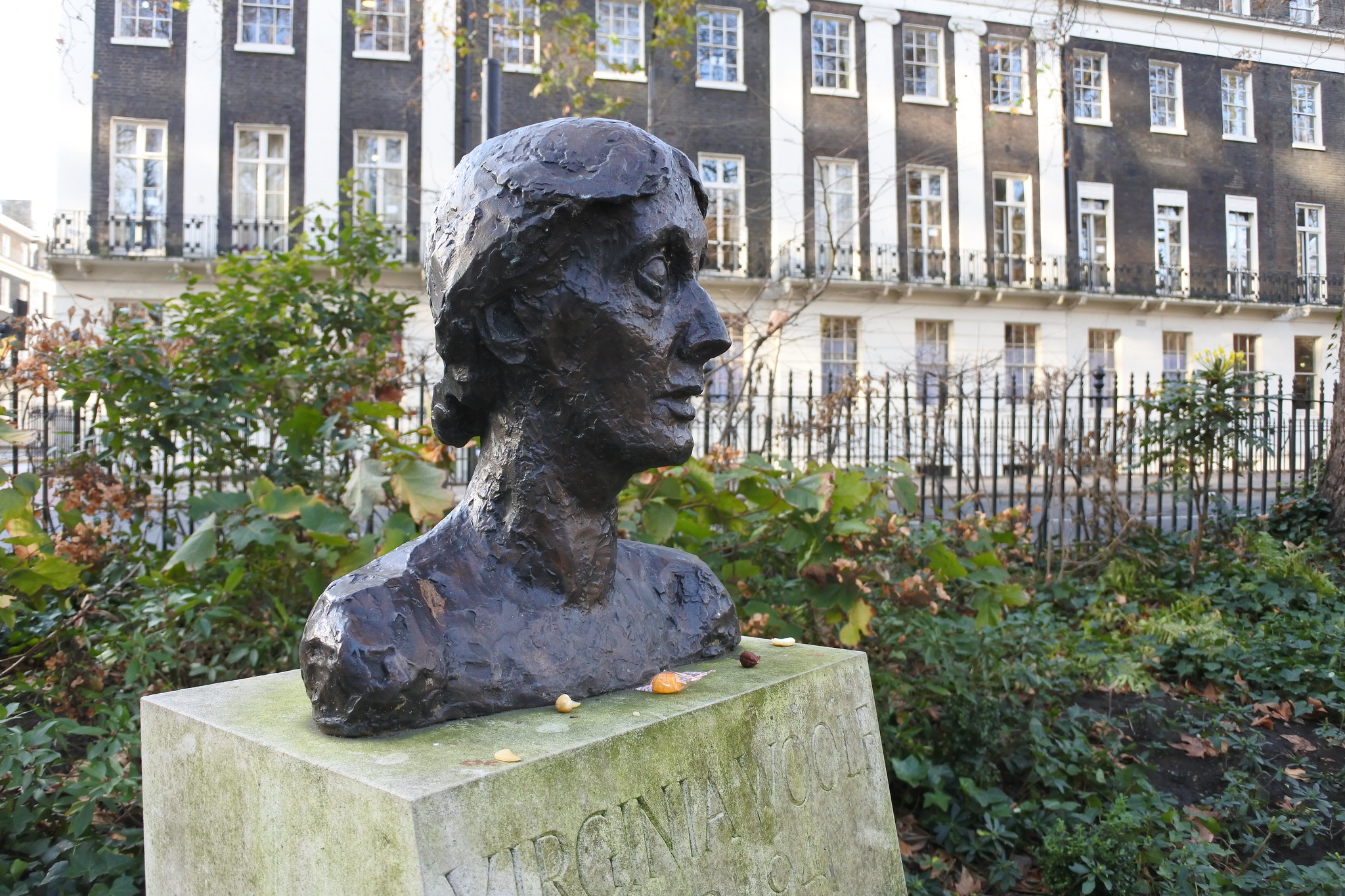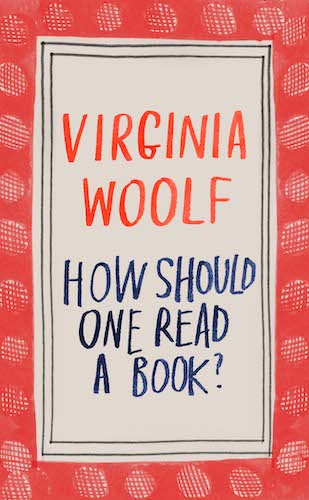Books & Culture
Sheila Heti on the Geometry of Stories
In her introduction to Virginia Woolf's "How Should One Read a Book?" the author reflects on books as sculpture

After we have finished and put down a book, when the dust has settled, once we have slept many nights, had dinners, taken walks, taken care of our duties, then the book returns to us as a shadow-shape, as Virginia Woolf puts it, a visionary shape: “There they hang in the mind the shapes of the books we have read.” Why does the word shape keep occurring to her as the best way to speak of what lasts of the books we have read? In my experience, it tends to be writers who speak of the shape of books—not only of books they have read, but also of books they are writing. It is not just a mood or story the writer wants, or characters or ideas, but something more plastic, a form, just like sculpture has a form. A book is a watery sculpture that lives in the mind once the reading is done. When I think back on the books I have loved, I rarely remember the names of characters, the plot, or most of the scenes.
A book is a watery sculpture that lives in the mind once the reading is done.
It is not even the tone or mood I remember, but some residue remains—and that unlikely word is appropriate here—of a unique shape.
Sometimes the shape of an entire book will be compacted into the memory of a single scene: something simple—a room that was conjured in the mind, in which two characters sat, speaking. Sometimes the shape will be something more metaphysical: a new understanding of life, as the book ends. But how does an understanding turn into a shape? Perhaps because books always place us somewhere; they involve bodies in space, or the progress of minds. It’s as though a series of shapes—rooms, bodies, narratives, revelations—are laid one on top of the other, as you turn the pages of a book, and finally it’s like looking at a stack of translucent, colored sheets of plastic, which averages into an ultimate shape.
How are we, as readers, to judge the shape of one book against the shape of another—if the shape of a book is what lasts? How does one even describe a book’s shape to another person, when this shape does not correspond to something simple, repeatable or shared, like a triangle, circle or square? A book’s watery shape is formed by its movement—the progress the characters or the narrative took, which was a progress we lived through while reading it, and which then solidifies into a single, continuous episode, no matter over how many sessions we read the book. This mental episode excludes all the living that happened between the times we picked up the book. Yet the final, shadowy shape includes some of the living that occurred while we were turning its pages—not only what happened in our imagination, in the form of images of scenes, but also what room we were sitting in, what was going on in our life, what the days smelled like, how young we were, the political situation in general. The shape of the book ends up being some alchemy between the shape the writer created and the shape of our life as we read it.
This alchemy of these two separate worlds creates a frozen shape. But the shape is not actually frozen, for over the years and decades of recollecting the book, time melts and re-freezes the shape, again and again.
That is what makes literature such a living art form. The books we have read keep changing through time, perhaps more than a painting we love changes, because while paintings and theatre and movies live in our memories as things we have witnessed, a book is undergone like a dream. The specific images it calls up in the imagination can no more be communicated than the images from our dreams—so the real book is not the physical book, but its residual shadow-shape.
More mysterious is the fact that a writer is trying to create a shape when they write their books. But how can they be assured that the shape they are aiming for, that watery mental sculpture in their imagination, will be the same mental sculpture that appears in the reader’s mind? There is no way of assuring this, and no way of knowing if any book, read by a reader, leaves a shape of any resemblance to the shape the author had in their sights when they were making it. But it doesn’t matter. What else can an author do but try to create, with the book they are writing, a shape that is satisfying in the cavern of their own mind; something that seems to them to have a certain movement and harmony, and the most pleasing dimensions.
A circle or triangle doesn’t emerge from a movement, the way the shape from the progress of a narrative does. But say that was true of triangles and squares. If literal shapes were formed not by their sides, but by some unfolding in time that—once the unfolding had passed—left behind an inner sensation that we called “square” or “circle,” we would call literature one of the maths. And whether a book was a success or a failure would not be left in the hands of critics. It would be geometry that called it.
The real book is not the physical book, but its residual shadow-shape.
At the end of her essay, Virginia Woolf compares the pleasures of reading to the pleasure of being in heaven. In fact, God, who is stuck in his heaven, envies human readers—for while his heaven is one place, books offer multiple places. The reader doesn’t grow bored like God does. Yet I don’t feel that How Should One Read a Book? is an essay in praise of the heavenly pleasures of reading. Every time I read it, I am left with a darker feeling. I think the essay came from Woolf’s displeasure in having to pass through the critics in order to reach her readers. If the reader needs to be taught to read better, she says, it is to set an alternative standard for the writer, who is assaulted by the standard of the critics, who provide no real standards at all. Why? Because they are too busy: “Books pass in review like the procession of animals in a shooting gallery, and the critic has only one second in which to load and aim and shoot.” One second! Critics are killers of books, and since there will be no end to critics, the only hope for the writer is the hope of there being “another kind of criticism, the opinion of people reading for the love of reading, slowly and unprofessionally, and judging with great sympathy and yet with great severity.” Can a multitude of such readers triumph over these clumsy critics and make them ludicrous in the eyes of the world—such as this one, who “misses altogether and wastes his shot upon some peaceful cow grazing in a further field”?
In the 1970s and ’80s, the status of Virginia Woolf changed quickly and radically, from that of an important minor writer to a canonical, major one, a pivotal figure in twentieth-century English literature. How did this happen? It was largely because of the hard work of feminist academics. Decades after Woolf ’s death, the readers whom she was hoping for—with their own set of standards, different from those of the newspaper critic—came and read and understood her novels. Biographies were written about her, and countless academic papers and books, by people who had those qualities she thought the responsible reader must have: taste, sensitivity, patience, sympathy, curiosity, a history of having read widely and the understanding of literature that comes from having written oneself.
Excerpted from How Should One Read a Book? by Virginia Woolf, introduction by Sheila Heti. Copyright © 2020 by Sheila Heti. Excerpted by permission of Laurence King Publishing Ltd. All rights reserved. No part of this excerpt may be reproduced or reprinted without permission in writing from the publisher.









